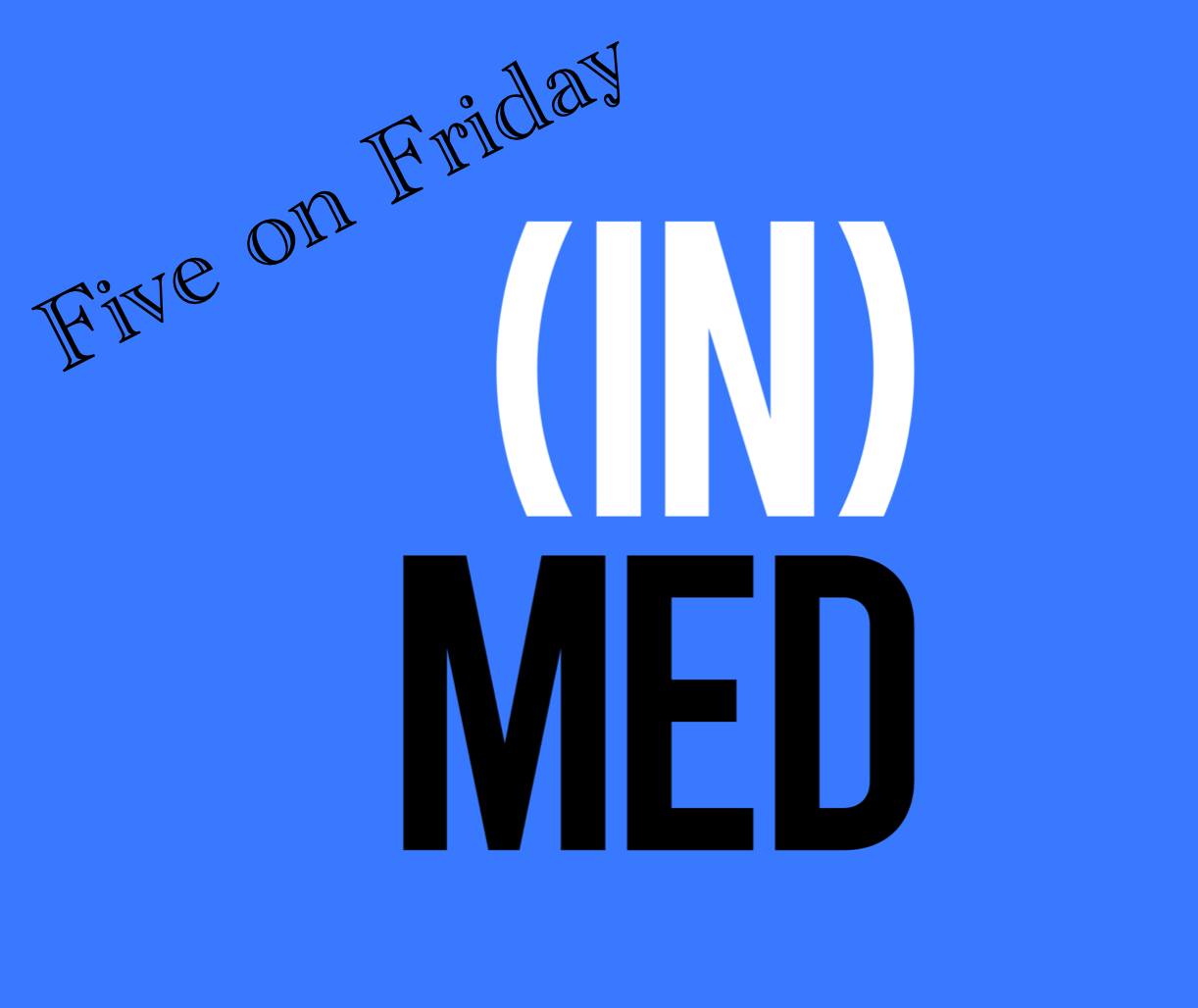Climate change is harming senior health.
That and other stories in "Five on Friday" for November 8, 2024...
Item 1: Heat waves linked to health events in seniors.
We’ve seen many instances where climate-change related disasters have caused a sudden spike in mortality. But what about the less conspicuous but increasingly common problem of heat waves? Do these events cause an increase in emergency room visits and hospitalizations?
A new study in JAMA Health Forum covering 5.6 million US residents ages 65 and up found that when temperatures were extreme (i.e., more than 90°F and in the 97th percentile for the jurisdiction), ER visits went up 10% and hospitalizations went up 7%. The effect size was what I might call “Goldilocks real.” That is, the effect was small enough that it takes big data to notice this effect, but large enough that it has a meaningful impact in communities. On extreme days, around 1 in 1,700 seniors had an “adverse health event” compared with closer to 1 in 1,900 on normal days.
There was also a “dose response,” meaning the longer a heat wave lasted, the greater the increased need for care became. The findings held up in subgroup analyses by race/ethnicity, urban/rural divides, and wealth.
Our policies today will affect temperatures in the future. We’re already starting to see the impact on our own health.
Item 2: More farmers got H5N1 than initially detected.
The CDC announced yesterday that 8 of 115 farmers (7%) in Colorado and Michigan who were tested for H5N1 (bird flu) antibodies after exposure tested positive. Antibody levels are detectable during the acute infection (unless those antibodies are from previous exposures), so these results indicate recent infections, but not active ones. That’s important because some of the individuals tested had not experienced symptoms at all. This tells us a few things.
Asymptomatic H5N1 is likely. That’s good news and bad news. The good news is that this means the average case is even less severe than was initially feared. The bad news is that this means that the virus may be easier to spread. At the moment, the virus does not appear to be spreading from human to human. But if mutations change that, the combination of higher transmissibility and asymptomatic disease could make an outbreak nearly impossible to quell, as was the case with Covid-19.
There have likely been many more cases of H5N1 in people than officials have detected. This might imply that animal-to-human infections are more common than we realize. As a result, the CDC has tweaked its recommendations for protecting high-risk farm workers. However, it could imply human-to-human spread, which has not been documented in any of the recent outbreaks. That seems little less likely, because if it were happening, I think we’d see chains of transmission emerge (e.g., farmer infects farmer who infects roommate or live-in relative) and we just haven’t yet.
Using symptoms to track this disease is pointless. Of workers who tested negative for antibodies, 39% had reported some symptoms in the aftermath of their exposure. Of workers who tested positive, 50% reported symptoms. That difference is just not helpful. We need to track this rigorously by monitoring and testings those who were exposed to high-risk circumstances, and not be misled by symptoms (or lack thereof). When will we learn?
The particular version of H5N1 in these outbreaks is just not as dangerous to humans at present. That could easily change, but the more cases we learn about without evidence of sudden increases in severe illness or death, the more likely it is that this strain carries less risk to us currently, either due to something about the virus, or some existing immunity we have from other somewhat-related strains.
We need better PPE availability and adherence on the ground. Another report found that PPE use in farm workers working with infected animals increased, but not by much (28% increase, and paltry mask uptake).
What to do? Well, increased monitoring and better protection are needed. As Dr. Nahid Bhadelia wrote in JAMA yesterday, emerging threats are usually either categorized as “low risk” or “crisis.” While we are in a low-risk moment with respect to H5N1, we don’t want to miss the chance to keep it there.
Item 3: What I’m reading: “Women at the front line of the Marburg virus disease response in Rwanda.”
The response to the Marburg virus outbreak in Rwanda has gone exceptionally well. It’s a deadly disease, like its relative Ebola, and controlling it takes great effort and resources. A new essay in Lancet Global Health written by my friend Dr. Tsion Firew (and her colleagues) highlights the some of the strengths of the response, and some areas for improvement. As the piece outlines, women physicians were leaders on the front lines of the response. That has not always been the case, and one way this is reflected is in PPE. While there was PPE (a contrast to the Covid-19 response in the US), the piece points out that these are often “tailored for tall men with short hair, leaving women inadequately protected against disease. Personal protective equipment should fit people like us and ensure our safety on the front lines.” Isn’t that messed up? This is low-hanging fruit and I suspect that advocacy like this will lead to simple changes that will better protect women risking their lives on the front lines. The piece also celebrates how quickly vaccines and neutralizing antibody treatments reached the front lines and suggests that this made a real difference in quelling the outbreak. It’s also important to acknowledge that the success of the response relied on local preparation, expertise, and courage but also on a key international partner: the United States. “We express our heartfelt gratitude for diplomatic relations between Rwanda and the USA, underscoring our shared commitment to advancing public health.”
Do we really want to retreat from the international scene? We want the US to be respected and appreciated, not loathed. Helping our brothers and sisters fight deadly diseases is not only the right thing to do, it’s politically wise as well.
Item 4: Voices: Anand Parekh of the Bipartisan Policy Center.
Last week, I interviewed Dr. Anand Parekh of the Bipartisan Policy Center for MedPage Today. Our conversation can be found online here. I spent a considerable amount of time discussing how bipartisan-friendly experts like Dr. Parekh would respond if Donald Trump won the presidential election. At the time, my questions seemed much more hypothetical than urgent because I really did believe Harris was going to win. We covered abortion and reproductive care, the Affordable Care Act, and other hot-button issues. Given the results on Tuesday, this interview is much more relevant, because if we are going to get anything positive done in the next four years, it will take compromise and working (to the extent that it’s possible) with anyone willing to do so.
Item 5: Poll of the Week.
Here are the results from the last poll. Thanks for your votes! While in my opinion, we didn’t get the President who will make this better, we will fight on.
Item 5a: Poll of the Week for this week!
This one is an Inside Medicine opinion poll. I know you’re here for my views and analyses, and I am supremely grateful and honored by that. But this newsletter started as Brief19, a publication which had dozens of rotating physician and public health expert author contributors. I’m wondering if fresh perspectives from other authors I trust would be welcome from time-to-time. Assuming that I carefully curate and edit any guest posts that appear here….
That’s it. Your “Friday Five!” Questions? Comments? Please chime in!
Feedback! Have any ideas for next week’s Poll of the Week? Any great articles you’ve read elsewhere that you want to share with the Inside Medicine community?








About the poll, I have full faith that you would carefully vet & review anyone you'd allow onto your platform. Grateful for your work!
I'm 68. I have no medical issues but I am finding the heat much more difficult to deal with but it's not just me. I realized I can't hike in hot weather at all, anymore, and even 80 is a whole different 80 somehow. My friend said it feels to her like she's in Samoa in NC now. She is having the same issues and she's 10 years younger than me. I have asked several folks from 50 up and same thing pretty much across the board. Really odd because I have always been more cold natured.